I'll use the following goodies on that Trumpeter 1/32 Flanker B, first mould
- Mastercasters Russian pilot and Su207 wheels
- Zactoman intakes, nose and canopy correction
- Lindenhill decal & stencils
- Eduard prepainted cockpit set and exterior set
- Quickboost seat and frontpanel glareshield.
- Aires exhaust set.
The idea is to display that huge bird braking on the runway on the landing roll.
Airbrake will be popped out, nose wheel compressed, pilot at the controls and canopy closed of course.
The big challenge of this build will not be the aircraft itself but the brake chutes I intend to deploy... I don't know at what stage yet :)
I'm just out of a few days fighting hard to make two 1/32 resin figure fit in a Skyhawk cockpit, and I was ready to start back with this one. But nada, the mastercaster pilot fits in the Su27 cockpit like a glove. Even the feet nicely rests on the rudder. Very well done MasterCaster, that figure is great.
I debated using the kit seats or the quickboost and finally chosed to scrape the belts from the resin seat and use that one. the figure fits both the same way.
Of course since a modeller can't be totally satisfied, the pilot doesn't have his hands on the control and that will need to be modified. I borrowed 2 arms from a US pilots to see if it would fit with minor surgery. that US pilot is huge so the arms are a bit long :)
The next step was to try the seat &pilot into the canopy and up the fuselage
And then close the canopy to see if I have enough clearance...
Yep, works ok. The IRST structure on the coaming prevent the canopy to close fully, that will be addressed later. The zacto vacu canopy was not so hard to cut to shape (always a stressfull moment) and it's also a great fix for the kit.
First time I use prepainted cockpit. It's quick and it's nice :)
Cockpit colour is aeromaster 1101 french blue. It matches perfectly the eduard colours. too bad we can't find that one anymore.
The assembly started with the intakes and they are a real pleasure to work with. the fit is perfect and the resin is very nice to work with. never had I the pleasure to work with such a nicely crfated and designed aftermarket product. I'll raise the FOD guard so I don't even need to sand the two halves of the intake trunk.
Painting was done with a beige colours inside, FOD guard are dark metal. and the lips are fuselage colours.
The level of details on those intakes are flabbergasting. I wouldn't buy any flanker without them for sure. I won't spend a lot of time into the wheel wells - I know they lack a lot of details and tubing but I'll concentrate on what is really visible.
From analysing it's a rather easy model to build. It doesn't have many parts nor complicated assemblies. But it has some rather nasty traps.
Most of the time on this one is not spent on building but on the web looking for pictures and built reports to identify and see how to avoid them. I'll get on this back later
In the meantime, minor detailling was done in the gear bay and the intakes were glued in place.
It's nowhere close to what has been seen on some previous build and rather harsh, but enough for me there. Most of those aren't visible anyway. I just added the rear box and fuel pipes (yellow)
Again, it's really not laid out as it should be, the idea was just to populate the area with yellow pipes. I also added the two exhaust aft of the wheel bay. Easy enough to do.
the other side doesn't have the fuel pipes but some sort of pump and a few green pipes. Nothing fancy. Of course the real one has 4 parts, mine has 3. A bigger exhaust was also fitted aft of the wheelbay. The nose bay is from the box. I decided to paint the gear bay a mix of hemp and grey/blue. The contrast look nice and I saw that on many pictures.
The intakes tend to bent a bit the lower fuselage when they are glued on. Something that will need careful handling when the fuselage parts are glued together.
I almost blew it on the port intake because the end of the resin fan wasn't sanded enough and prevented the intake to fit perfectly. My contact points between the lower fuselage and the front part of the intakes is also very small and that may cause problem later on in the build ...
I'm about ready to close the fuselage together.
The first trap to avoid is gluing the wing on the bottom fuselage and relaise that you have a step between the wing and the top fuselage. Something very hard to fix. Many guys glue the wing to the upper fuselage before closing it and I must say I'll do the same. Although Zactoman identified the problem and showed us where to sand the upper fuselage to avoid the issue.
Second trap is to avoid screwing too hard to nose screw as this will distort the front fuselage and probably create problems fitting the nose cone.
Third trap here is to make sure to study the tailerons as their pivot point isn't placed correctly and may need to be solved before closing the fuselage if you want to make it perfectly. I think that in my case I'll simply replace the pivot point after. I won't superdetail the area but I need to place them in the braking position, so I'll have to change the pivot point anyway.
Another trap to avoid: Nose fitting:
Better follow Zactoman instruction and remove a bit of material before closing the fuselage ...
The fit isn't perfect on the sides and since the plastic is very thin around the nose, you run the risk of sanding through ...
First tests with the colours:
painting a Su27 is not easy. actually painting it is, choosing the colours is not :)
I finally decided to make my own mixing based on adversary blue colours.
I finally decided to make my own mixing based on adversary blue colours.
Blue FS35190 = 5xH11 + 1xH308 + 1xH322
Haven't decided for the grey which should be something like H306, 307 or 308
Of course all this will be lightened up and faded in at a later stage. and I'll probably make darker fresh paint touch ups, especially with the dark blue.
The grey is on: H308 was chosen.
fading part 1: inside of the panels with base colour + white
at least for the grey and blue.
at least for the grey and blue.
Part2 of the painting was completed and the green dielectric is on as well.
I'll probably blend the colours together with a mist of pale blue now to give it less contrast - although the flash pictures give more contrast than there actually is on the real model.
the varnish and future weathering will blend the colours as well, but I'll try the pale blue mist first and see how it goes:
I'll probably blend the colours together with a mist of pale blue now to give it less contrast - although the flash pictures give more contrast than there actually is on the real model.
the varnish and future weathering will blend the colours as well, but I'll try the pale blue mist first and see how it goes:
Here is the blue mist: The picture don't make them justice but the result is much better now
Then I painted the large exhaust areas. Nothing fancy. Some different alclads here and there and a first try with the new Alclad Hot metal blue which is very nice although I'm sure tamiya clear blue would do the same. Lots of masking on those. I tried voluntarily to make some tiny paint spots randomly with the airbrush by starting on the model instead of beside it. Nothing of that is quite controlled painting :) Interesting for a first try in the dark side.
This will do for the time being - they will be further weathered at later stages.
Primer yellow into the airbrake and slats and i'm about ready to work on the cockpit and gears.
Before and after the light blue mist.. just testing, comparing ...
although i've got some nasty flash reflection in the greys... first time I use flash for those kind of pictures, sorry!
Some wheels problems ...
I have the kits wheels and Mastercaster's wheels. Main wheels, no problem. Mastercasters wheels are flattened and seem a bit less bulky than the kit's. The great advantage is of course that you avoid that rubber
But the problem I face is with the smaller & flatened Mastercaster nosewheel. When the Mudguard is placed (both original and Eduard's) the rubber part of the noseguard is actually lower than the flat of the resin wheel.
At first I was very appealed by the springs in the wheels struts. But I lost one anyway :)
I'm doing a braking airplane, so the nosewheel strut will be compressed and thus I assembled the nosewheel without spring (but still moveable and reaching all position - I'll glue it later on.)
The two remaining springs have been inserted into the main gear but it's not a good idea in the end. The spring are too strong and don't compress with the weight of the model, the consequence is that the model sits too high on its main wheel. I'll remove the springs and I'd advise to get rid of them and glue the struts at the required level (and equal on both side).
I'm doing a braking airplane, so the nosewheel strut will be compressed and thus I assembled the nosewheel without spring (but still moveable and reaching all position - I'll glue it later on.)
The two remaining springs have been inserted into the main gear but it's not a good idea in the end. The spring are too strong and don't compress with the weight of the model, the consequence is that the model sits too high on its main wheel. I'll remove the springs and I'd advise to get rid of them and glue the struts at the required level (and equal on both side).
Next step, detailling all those gears. They are way too crude!
Progress is slower as I work on some smaller details and start to think about the canopy.
Painting the inside of the gear doors. Nothing fancy. Then populating quickly the main gears. All this still need to be weathered.
The flaps normally needs to be cut, but I decided to do that with paint inside of actually cutting in the plastic. Weathering still need to come there as well.
The next issue will be fitting the closed canopy. I guess it was designed to be placed open, although you need to separate the windshield dor that. When you place it closed, the frames of the canopy are not wide enough and care must be taken to align the frame with the fuselage correctly. No big deal, some guides will be placed. I intended to use the internal canopy frame for that but it seems it is not wide enough either.
So first dryfit and see all the different component behave together, we have eduard, Trumpeter, Zactomodels, Mastercasters and Quickboost parts in there!
The forward looking tiny camera on quickboost glareshield was lowered as it sits a bit high for the vac canopy.
As you can see, I glued the vertical canopy frames on the fuselage, this is actually the best guide for the vac canopy.
So first dryfit and see all the different component behave together, we have eduard, Trumpeter, Zactomodels, Mastercasters and Quickboost parts in there!
The forward looking tiny camera on quickboost glareshield was lowered as it sits a bit high for the vac canopy.
As you can see, I glued the vertical canopy frames on the fuselage, this is actually the best guide for the vac canopy.
The pilot is perfect! I just need to lower a bit the seat and lower the right hand so the stick gets lower in the pit. The biggest challenge there will be to fit the oxygen mask withouth destroying it. I need to empty the inside so it fits the pilot's face. The Hud was decreased in height, but as you see on the next picture, I have a conflict between the top rear view mirror and the HUD. I had to lift the mirror for the time being.
Next the vac canopy was fitted. this will be a major challenge to get right - especially without the use of cyano. The rear resin frame is bugging me because not wide enough but I'll back it up with small guides along the rims.
I used foil for the harness and PE buckles. the stick was cut and glued to his hand and his other hand goes on the throttles, it was just sanded flat against the wall. It fits just nice the flanker cockpit.
Piotr is finally in his cockpit. This was by far (up to now) the most challenging moment of this build.
Fitting the zacto canopy in a closed position. the cockpit frames are not wide enough and that creates a step between the canopy and the fuselage. This was overcome by placing some guides on the inside of the canopy and although all was successful when dryfitting, it went bad when gluing. I had to spend a full week end sanding and filling the canopy. Unfortunately, the vacuformed plastic doesn't sand very well. And care must be taken not to slip into the clear parts ... This will be a big surprise when I remove the masks.
Fitting the zacto canopy in a closed position. the cockpit frames are not wide enough and that creates a step between the canopy and the fuselage. This was overcome by placing some guides on the inside of the canopy and although all was successful when dryfitting, it went bad when gluing. I had to spend a full week end sanding and filling the canopy. Unfortunately, the vacuformed plastic doesn't sand very well. And care must be taken not to slip into the clear parts ... This will be a big surprise when I remove the masks.
Once satisfied with the fitting of the canopy, I could finally respray the canopy area and some touch ups in a darker blue as often seen on line birds. It gives a lot of life to the model, so far I'm pretty happy with it.
Decalling done, I'll need to thame a bit those red decals with a blue mist.
Here's the first draft of the parachute. From studying the picture, I came to the conclusion that the brake chute should be made of 5 squares of 225cm each. That makes a total height of 6.75m
Each square is subdivised in squares of about 32cm, delimited by the parachute lines crisscrossing.
Each square is subdivised in squares of about 32cm, delimited by the parachute lines crisscrossing.
In scale, that makes a parachute 21 cm long and high, made of 5 squares of 7cm. each crisscrossed by lines every 1 cm.
The center square has two extra lines in the center and the outer squares are cut in their longitundinal axis, but the lines remain there ...
The center square has two extra lines in the center and the outer squares are cut in their longitundinal axis, but the lines remain there ...
okay, okay, that makes it a little bit complicated, so here's a sketch:
The Flanker is landing !
At least it's done ...
The parabrake strings were done with fishing wires instead of metal and although it was a long lasting job, it gave much better results :) Those two parabrakes are the hardest thing I ever did in my modelist career!
There are many impressive buids of Flankers out there - I used a few of them for references such as the one from Geedubelyer , Mr Narita, Flankerman, Wasserfall, Fancherello, ...
I consider the guys I quoted above master in their branch and I'm grateful they document their work so that guys like me can steal their ideas and have the same kind of fun. many thanks gents !!
I consider the guys I quoted above master in their branch and I'm grateful they document their work so that guys like me can steal their ideas and have the same kind of fun. many thanks gents !!
Model completed June 13th, 2010
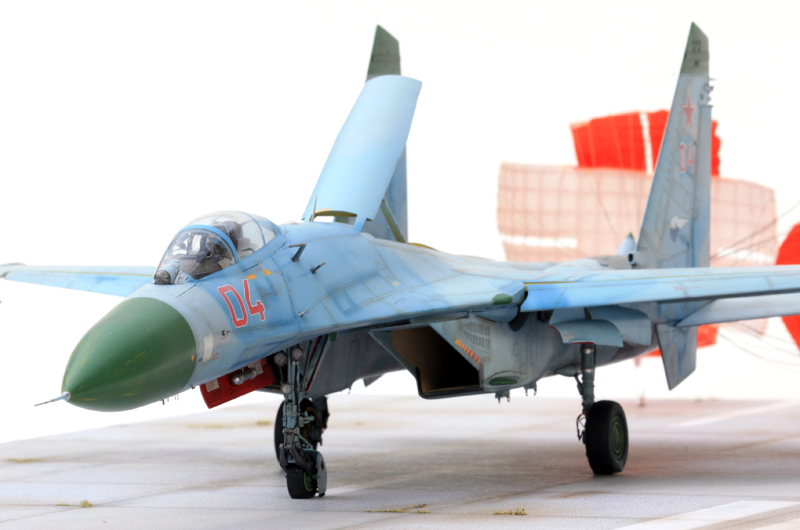
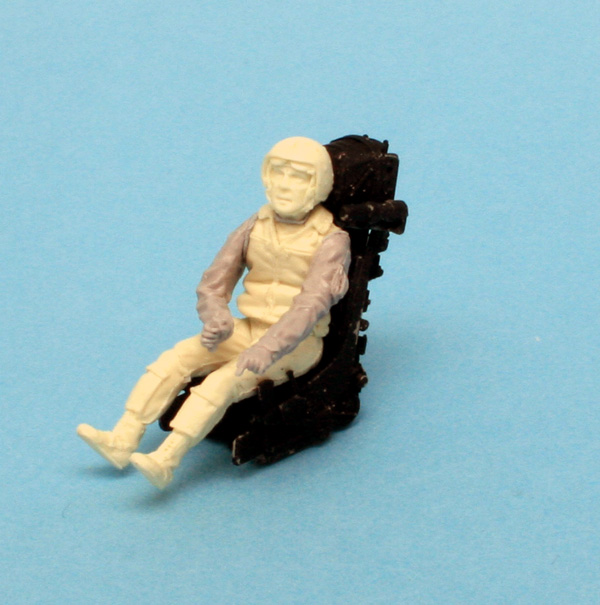
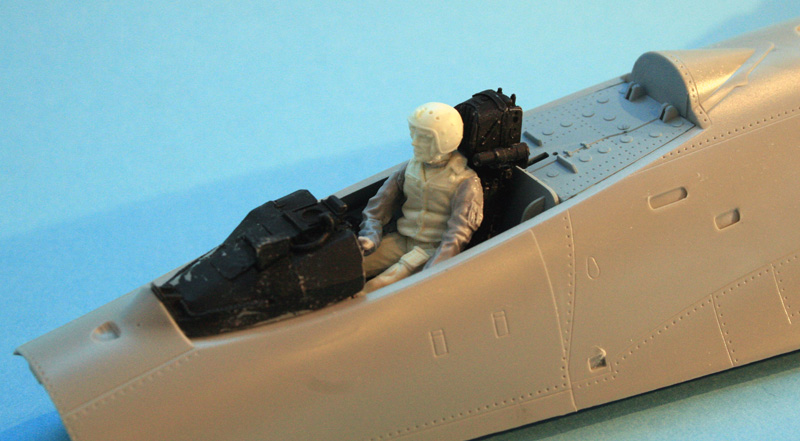
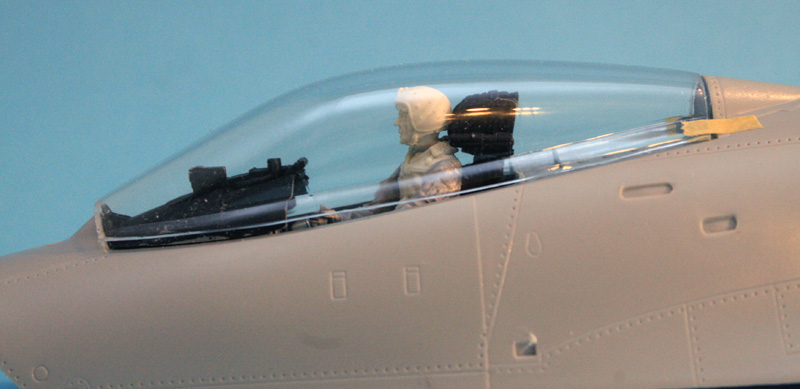
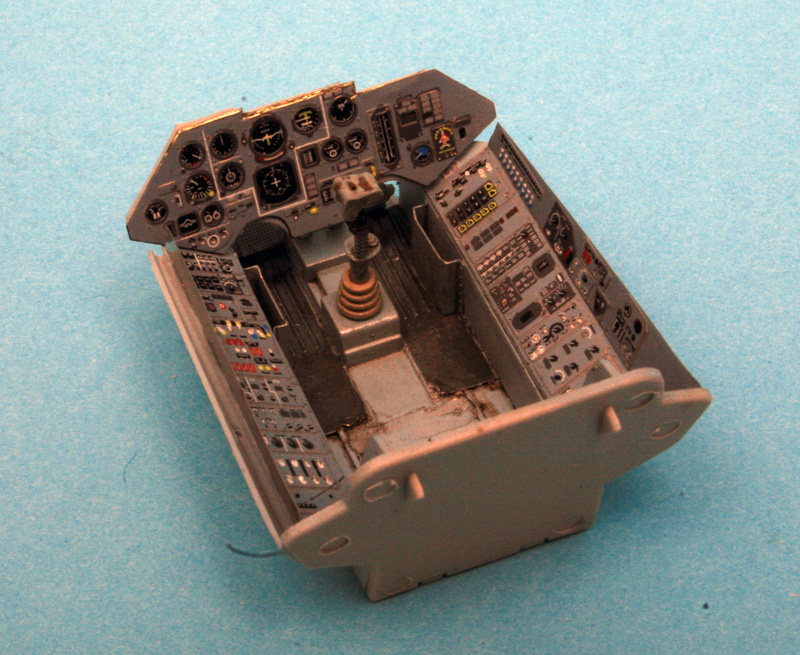
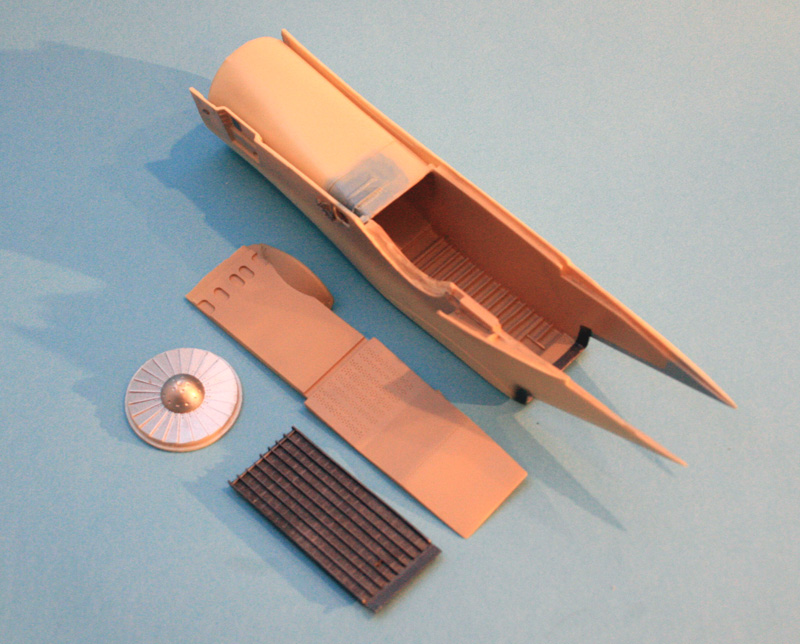
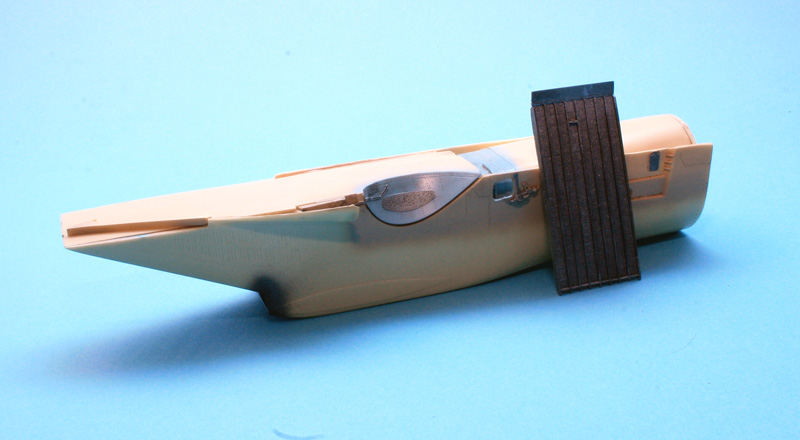
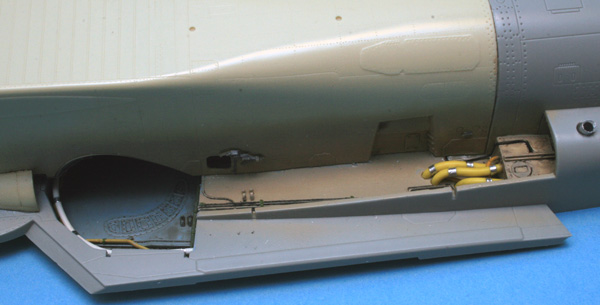
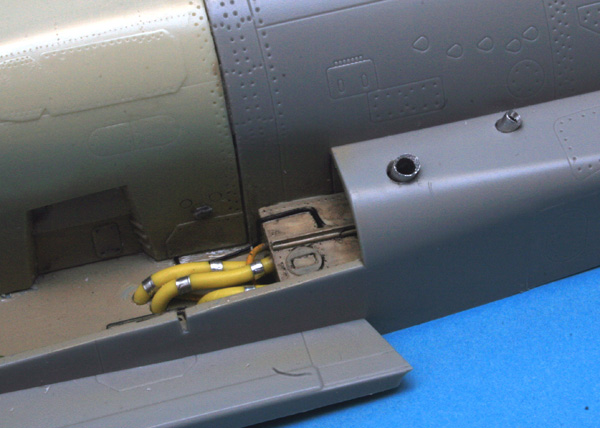
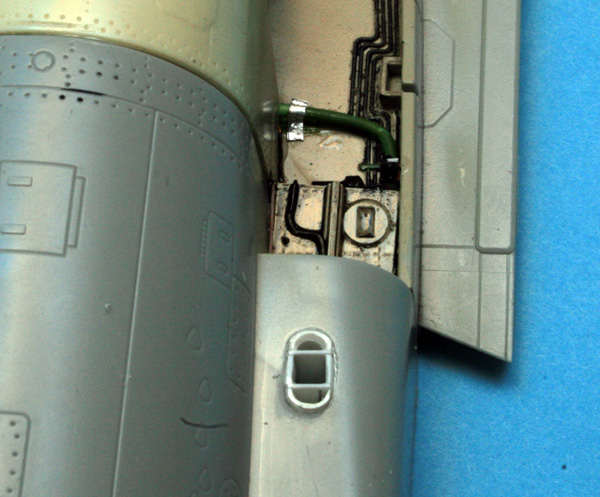
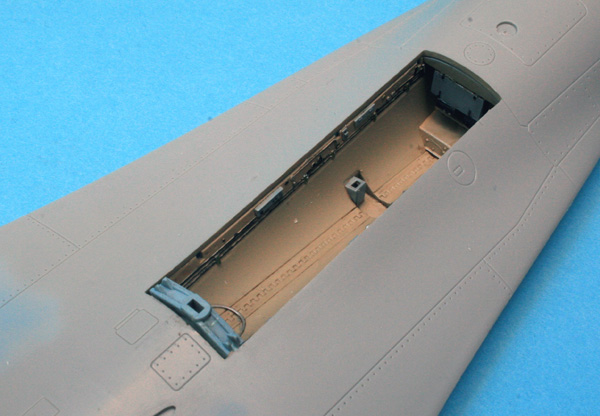

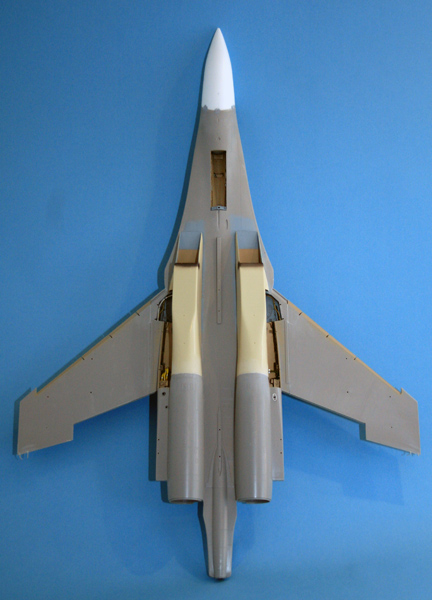
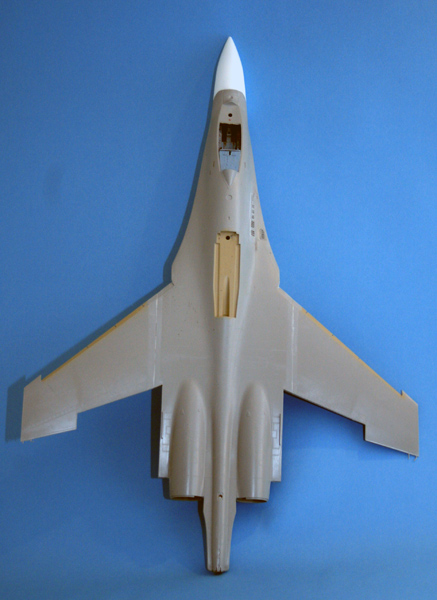
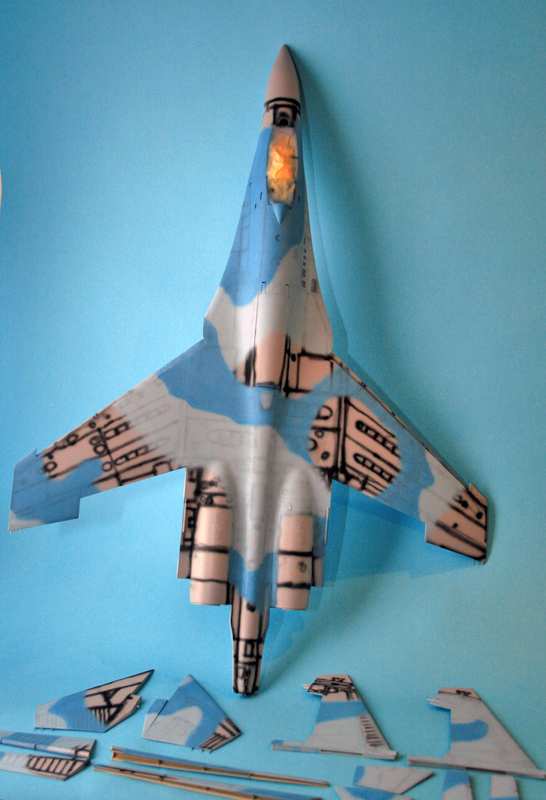
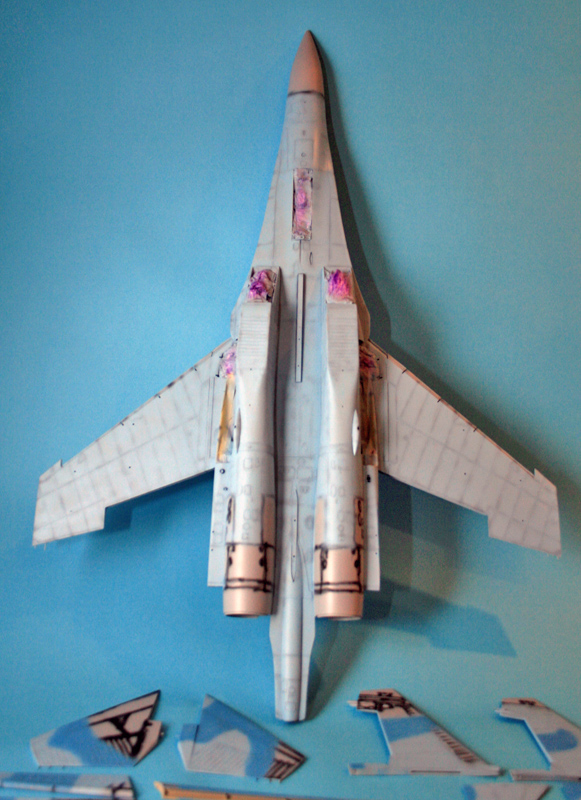
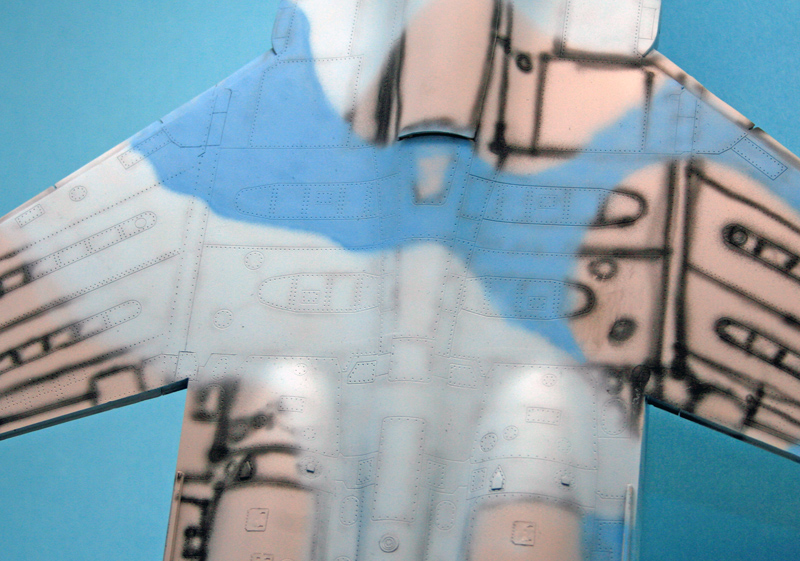
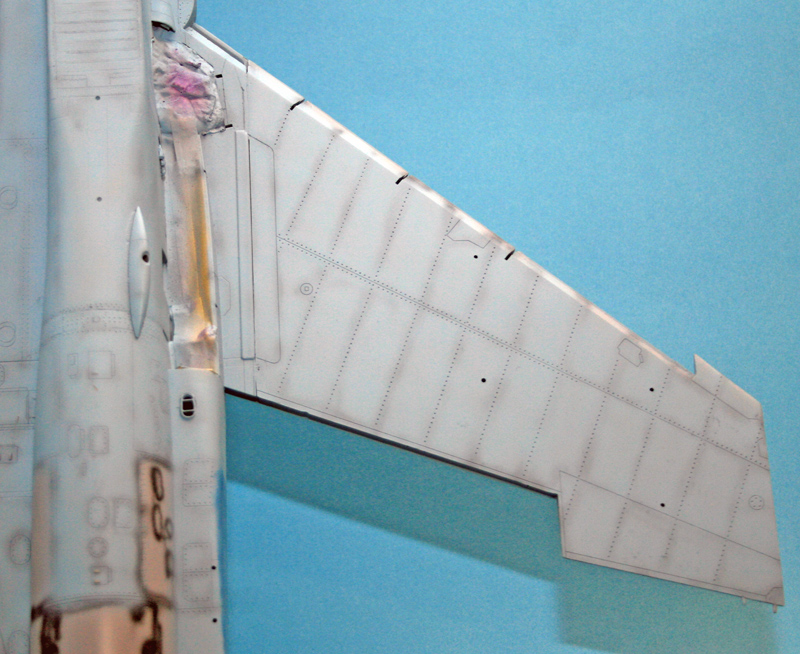
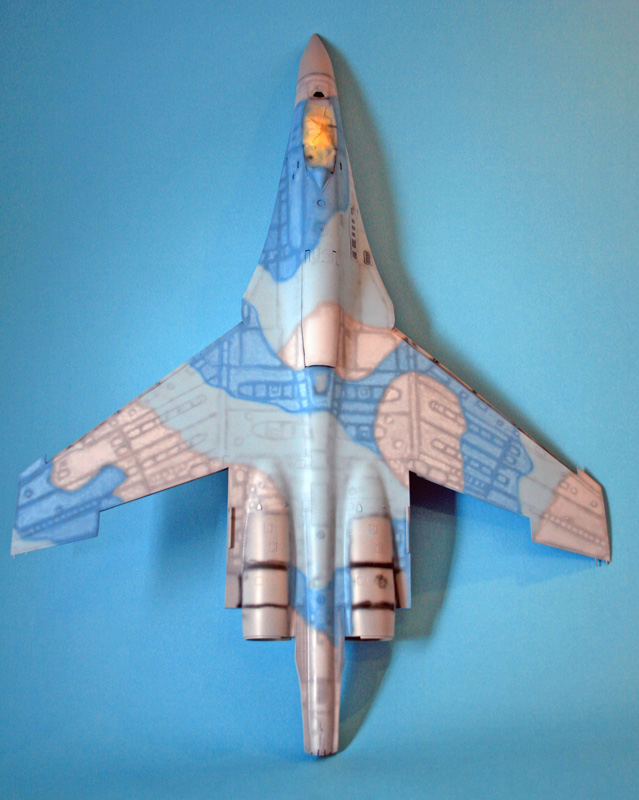
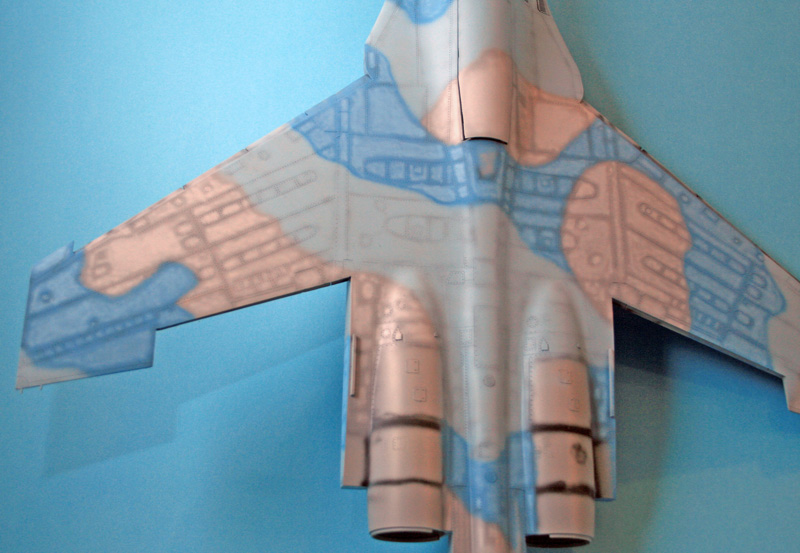
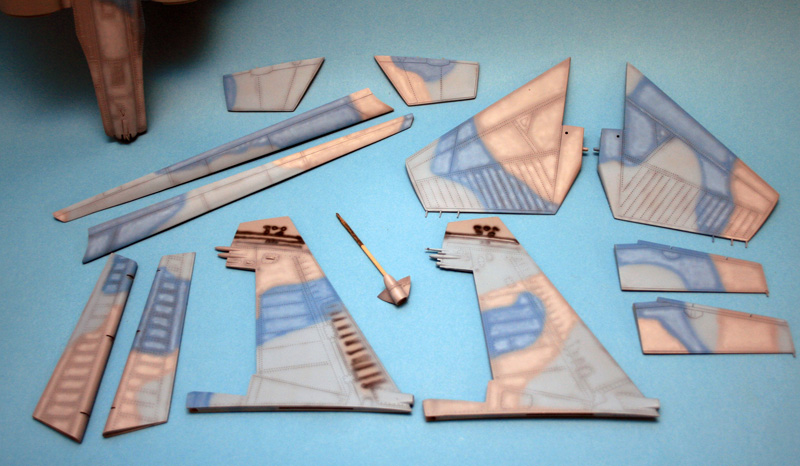
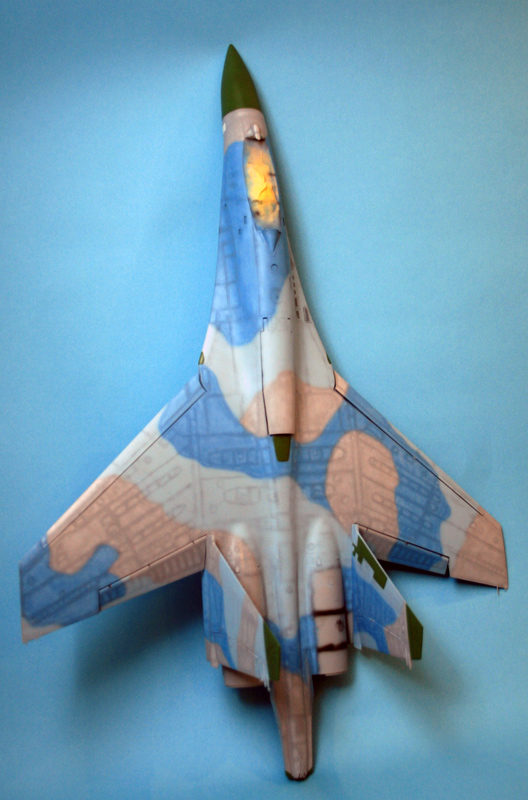
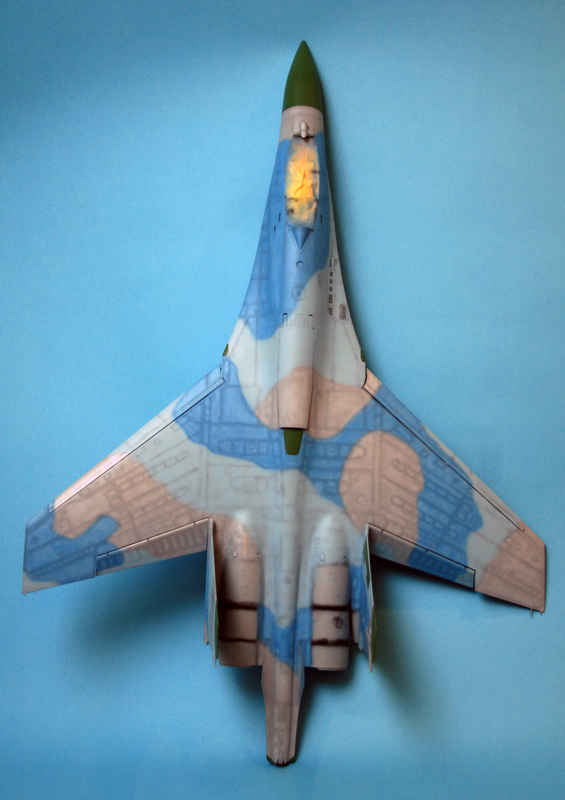
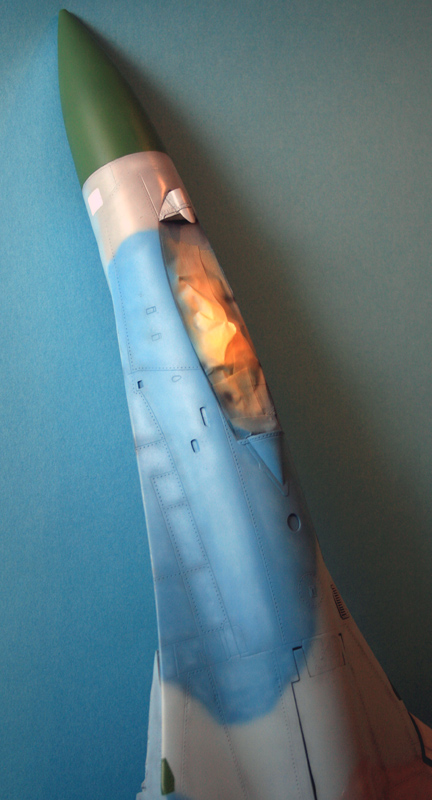
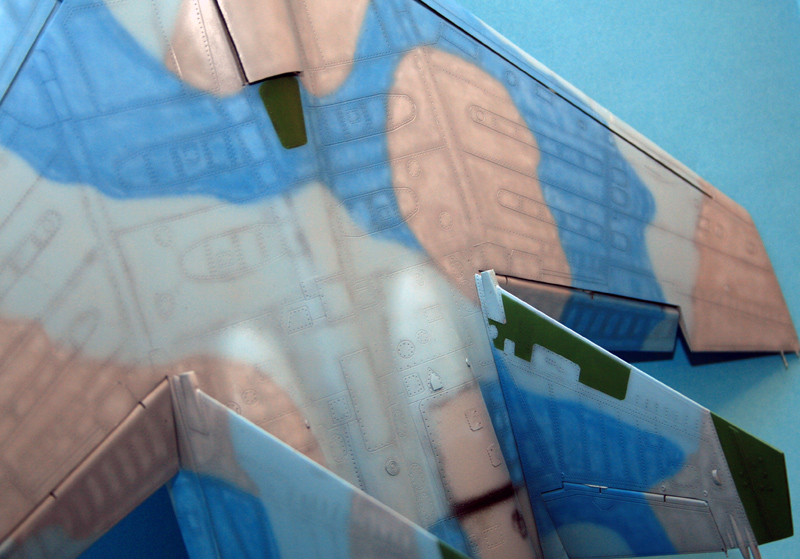
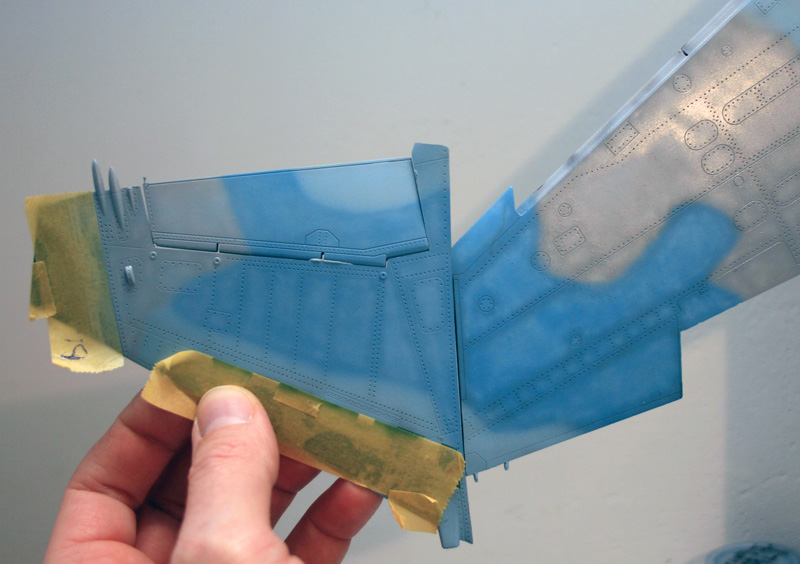
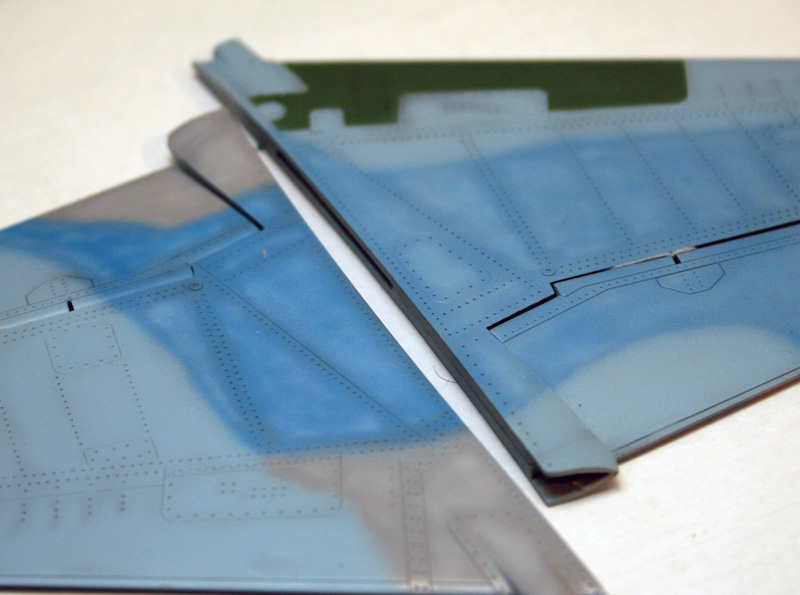
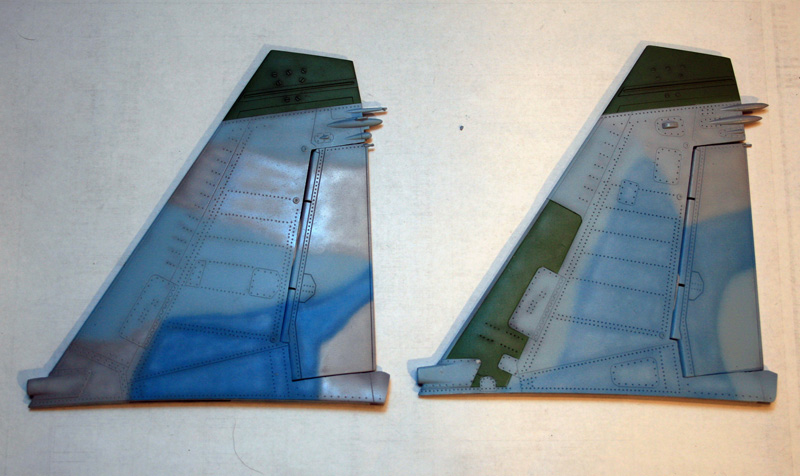
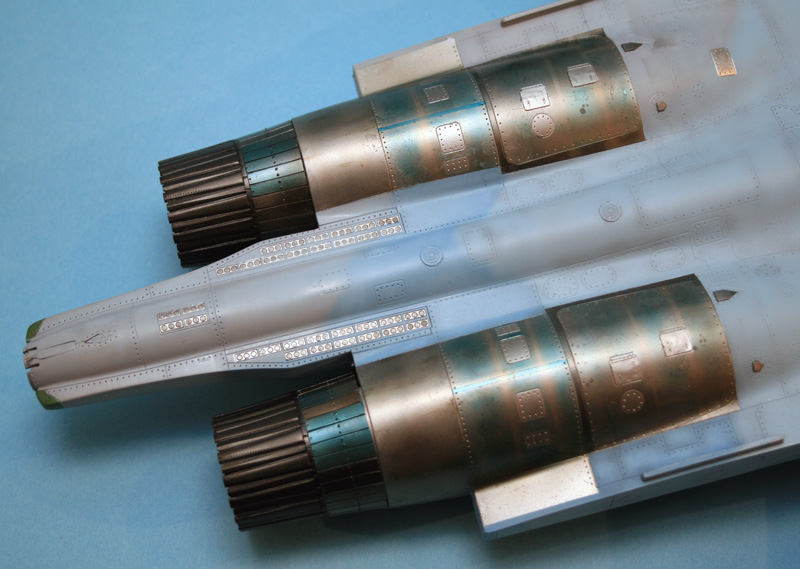
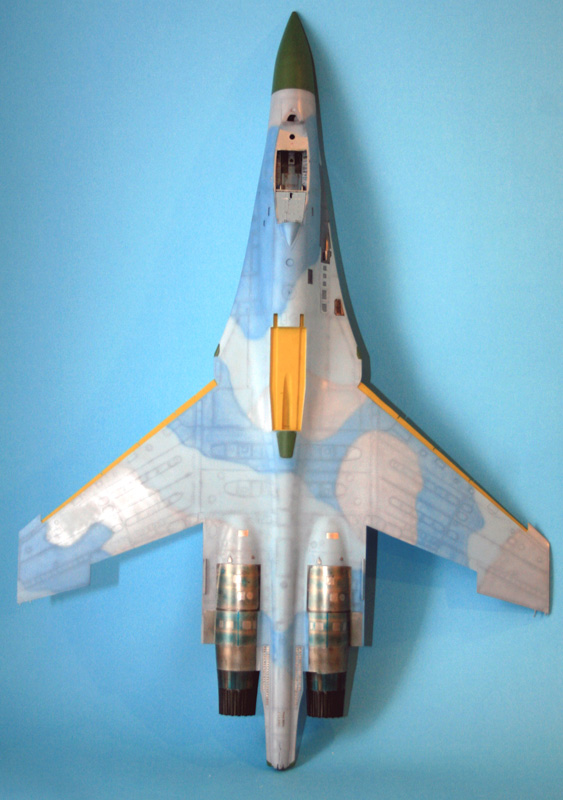
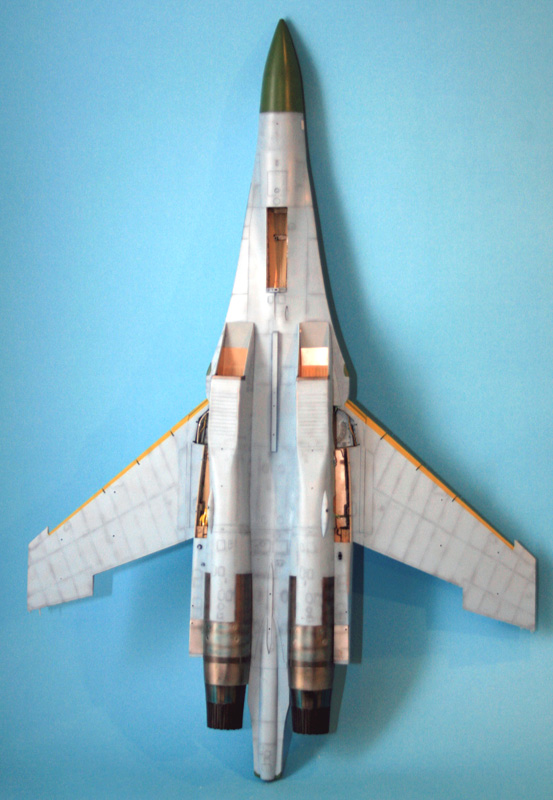
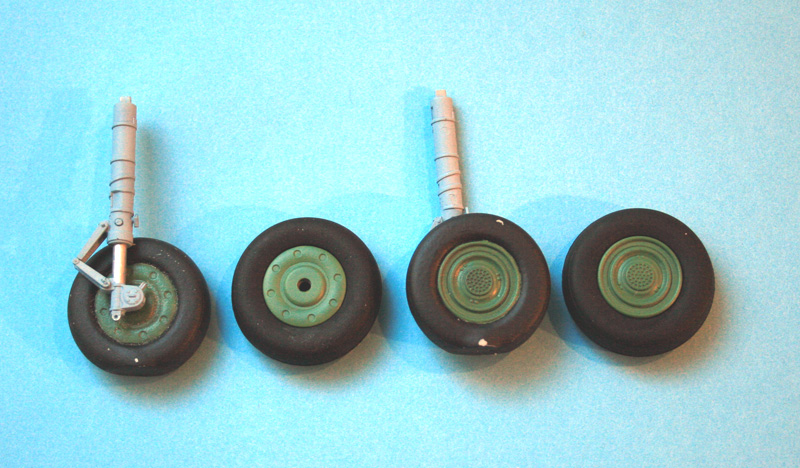
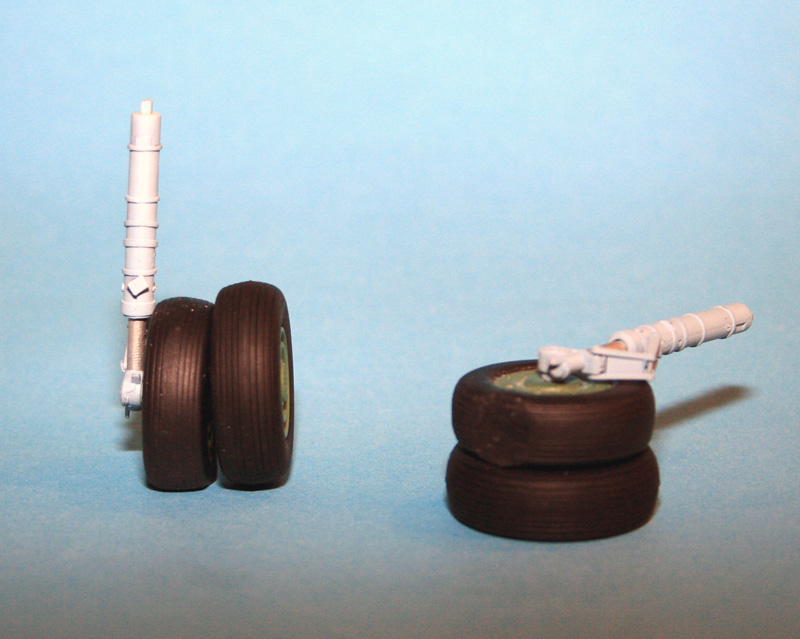
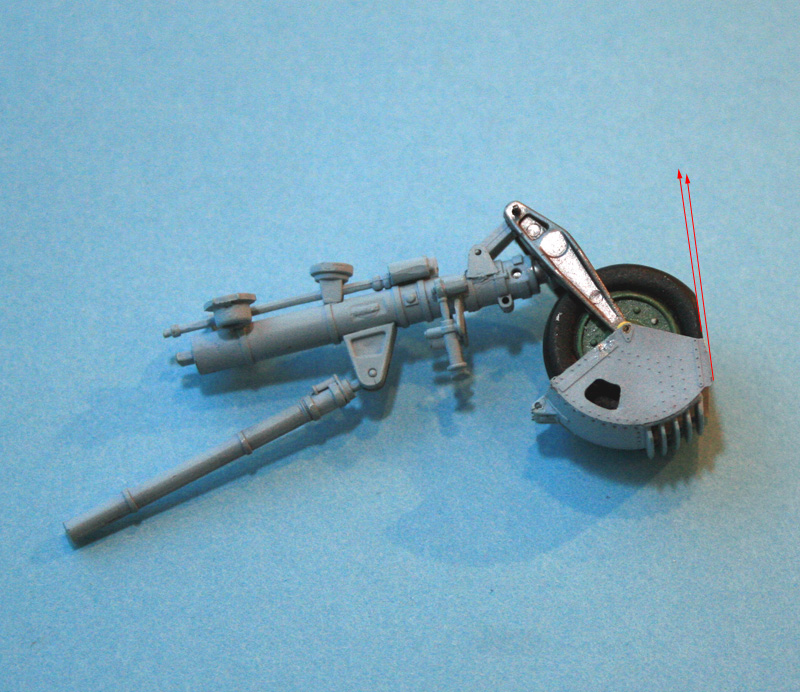
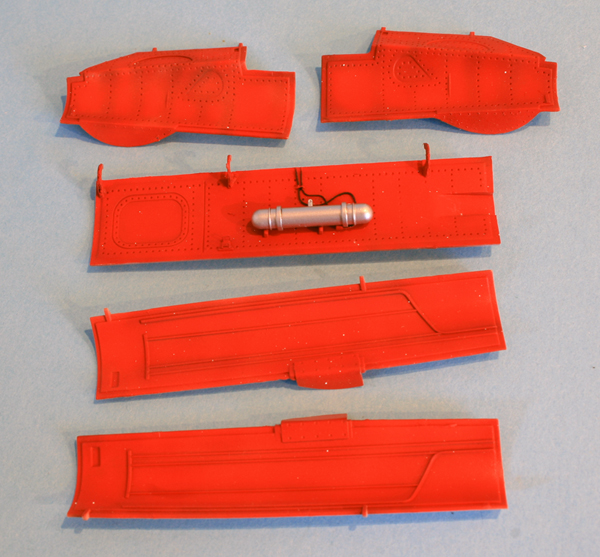
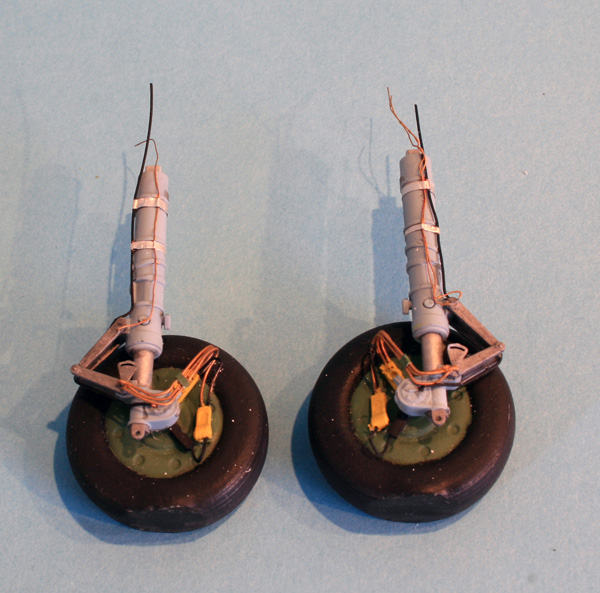
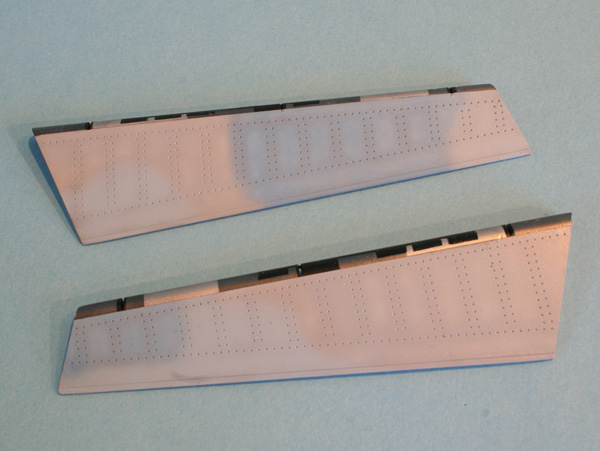
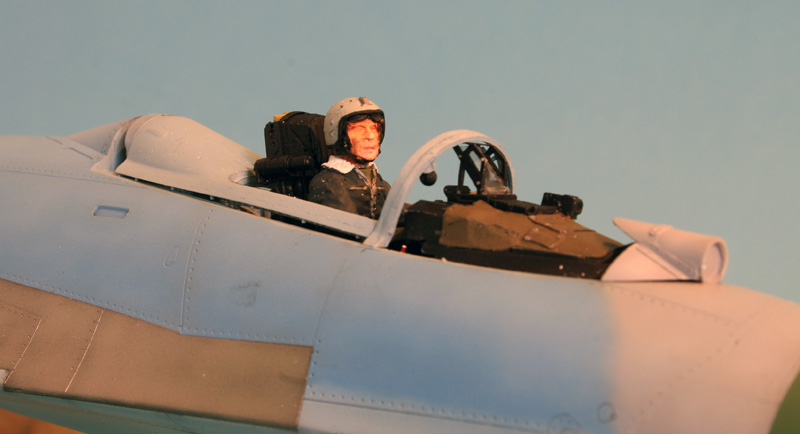
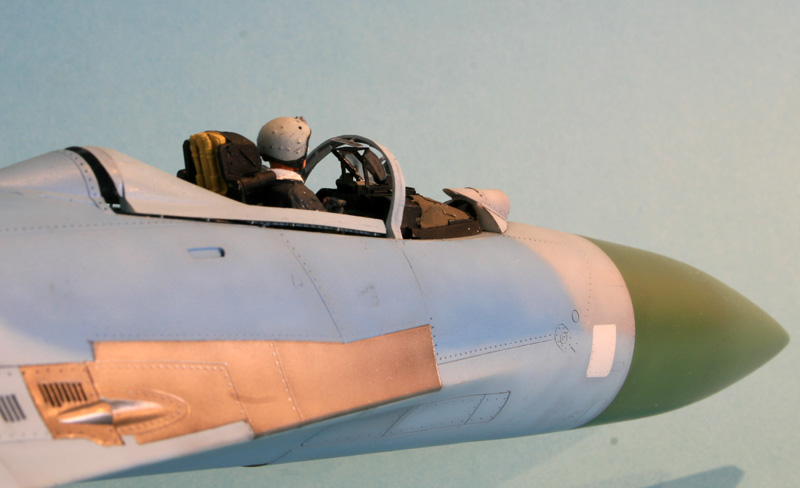
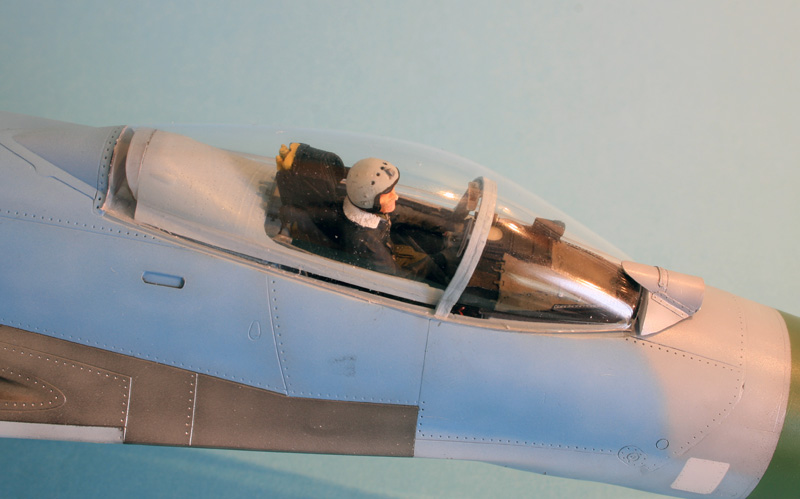
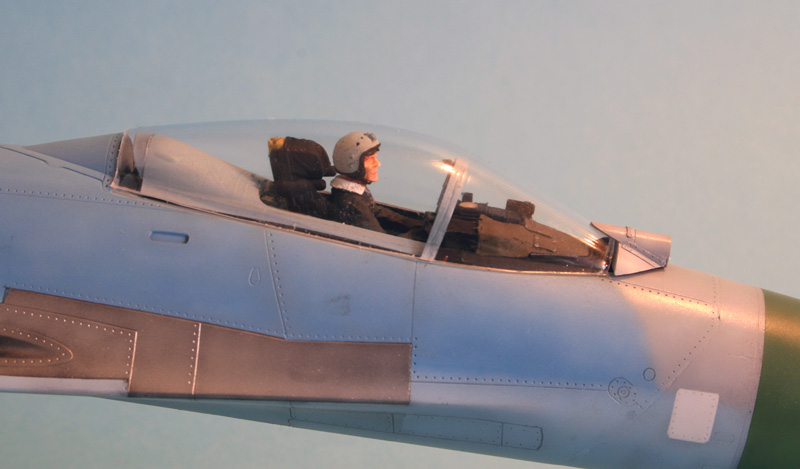
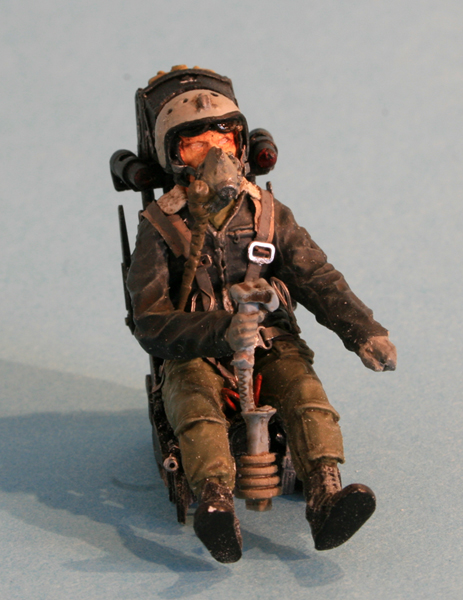
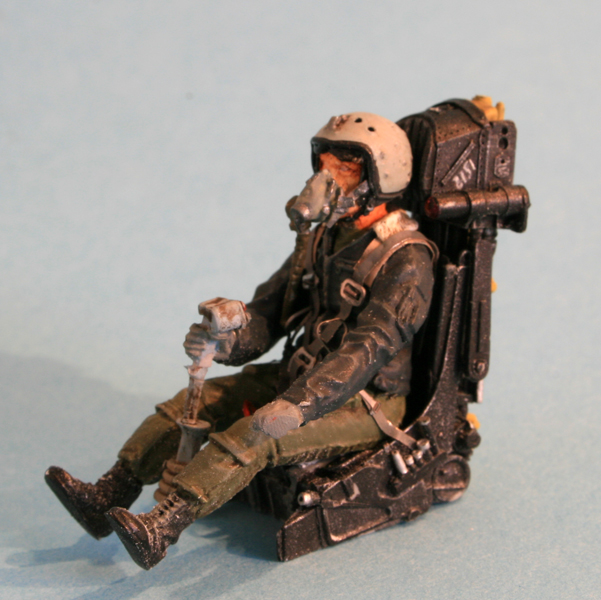
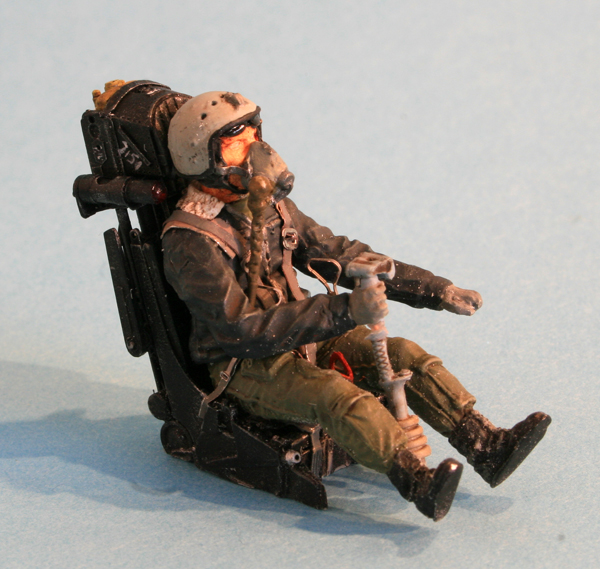
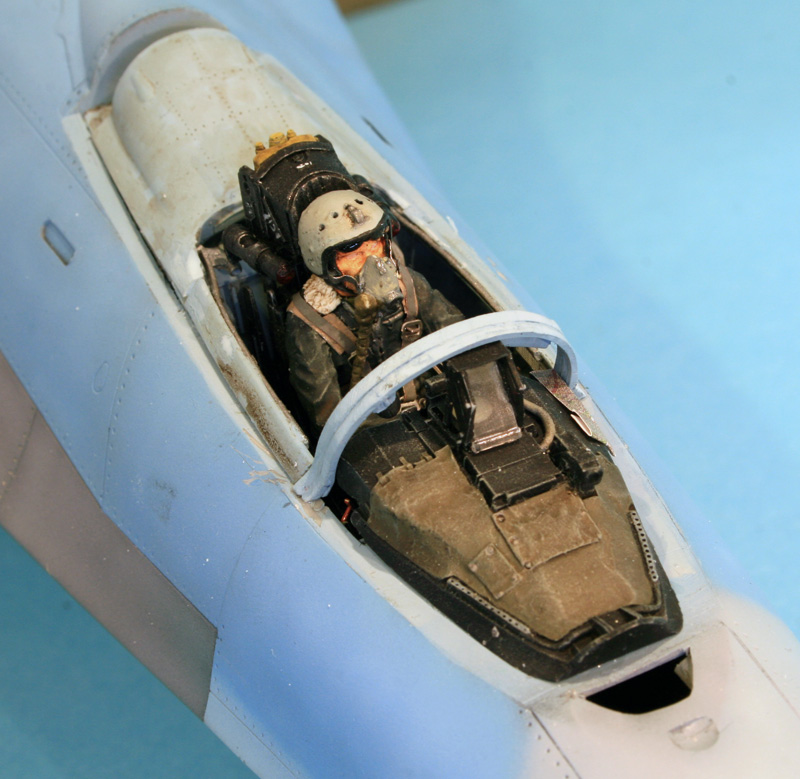
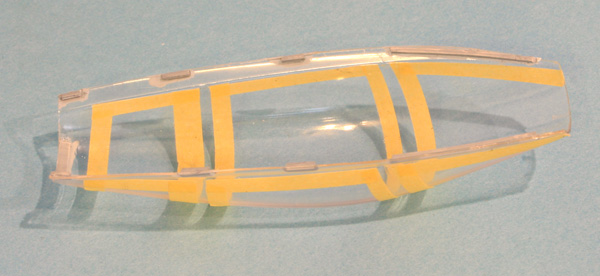
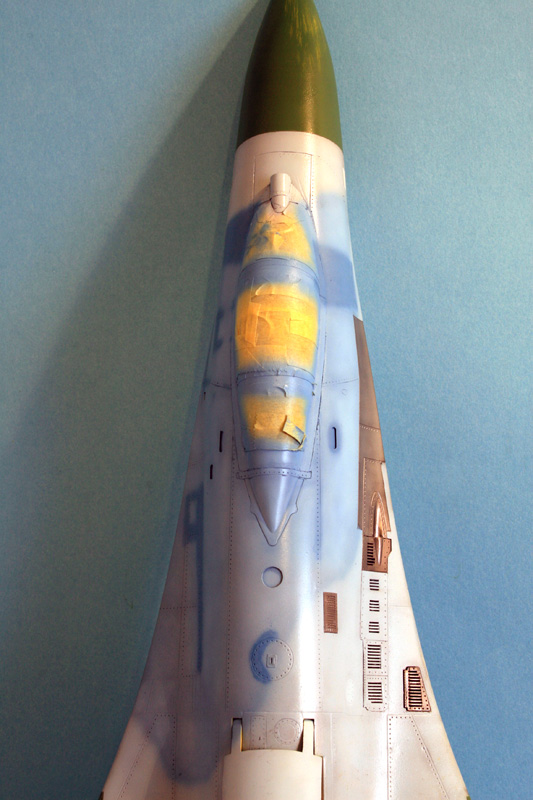
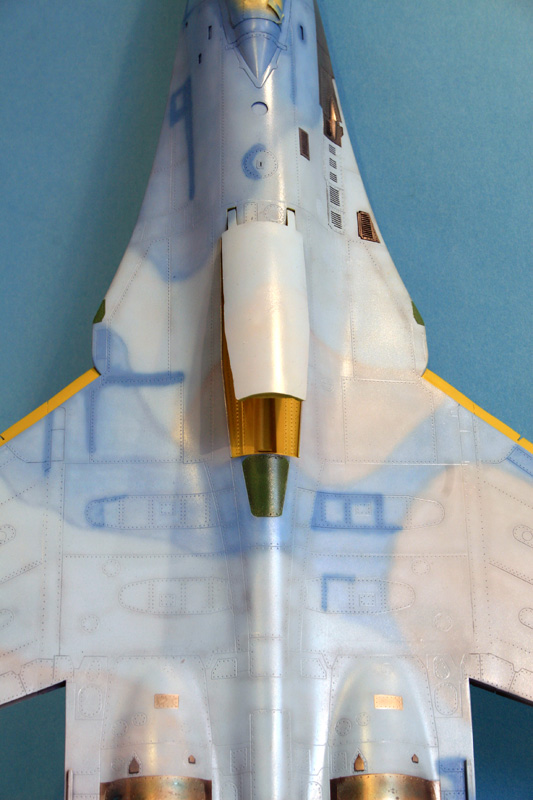
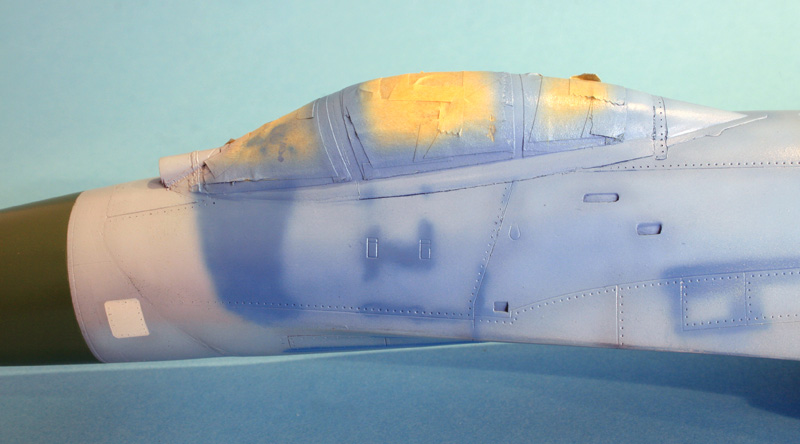
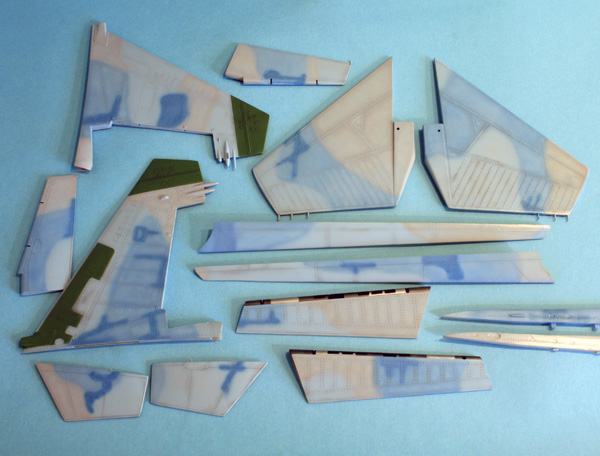
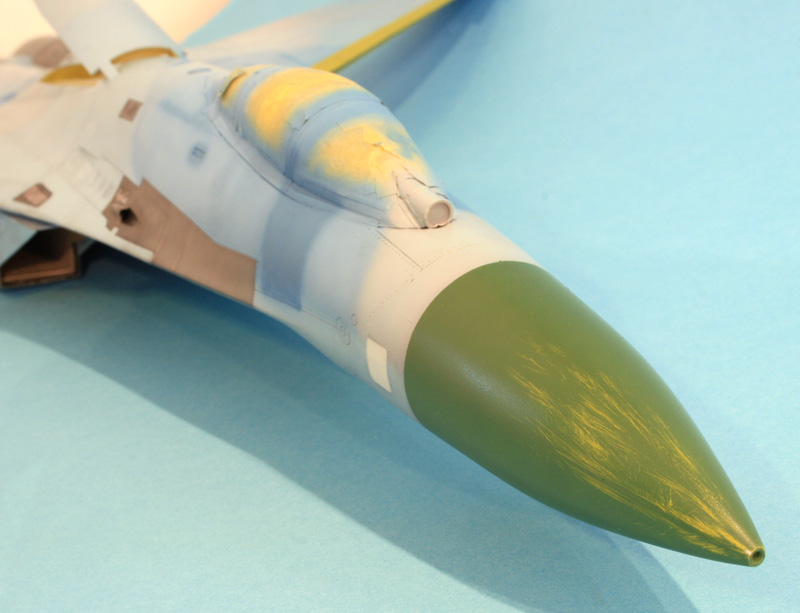
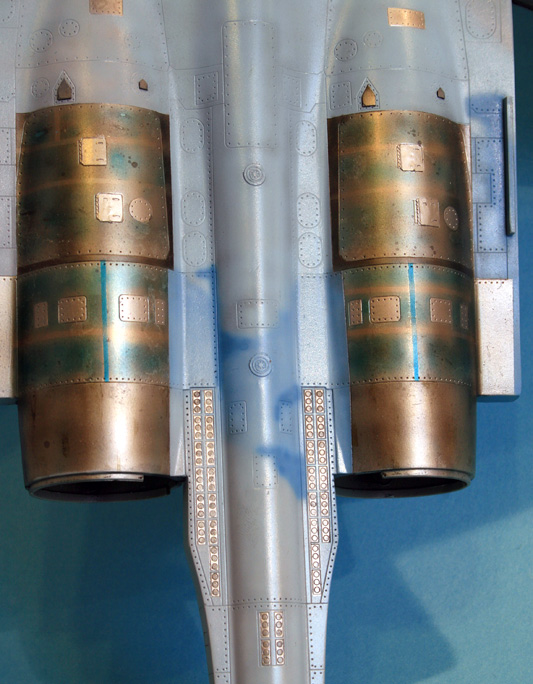
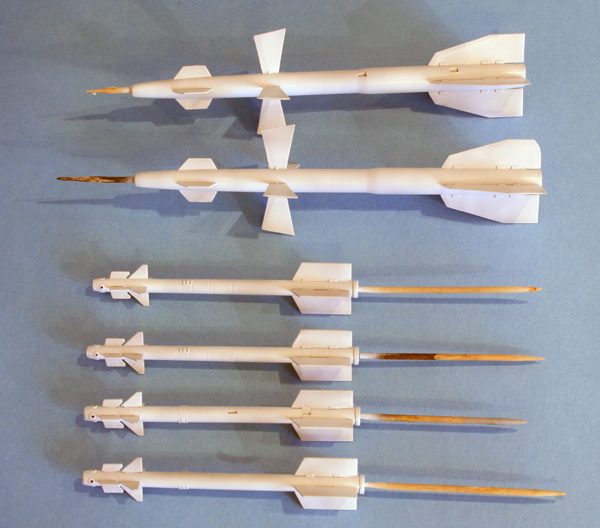
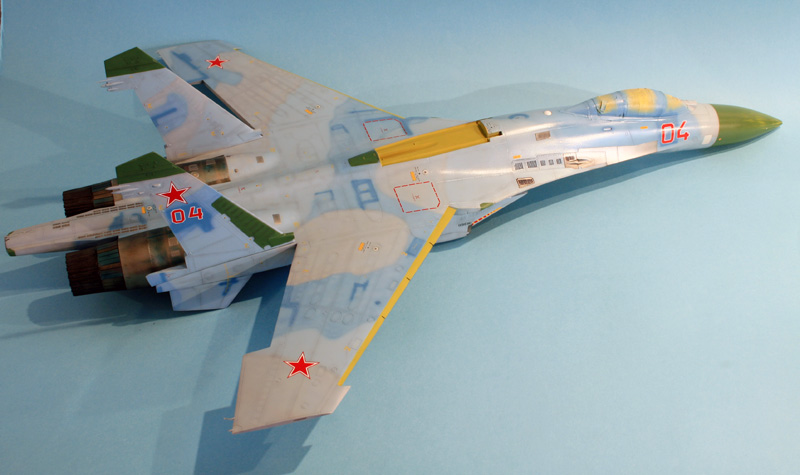
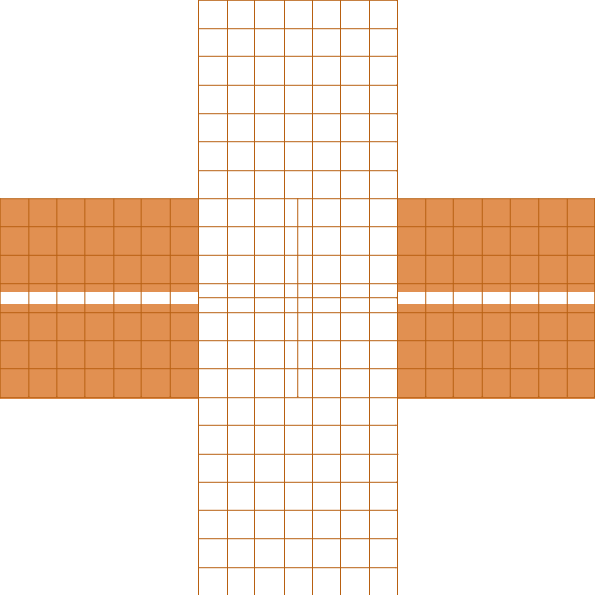
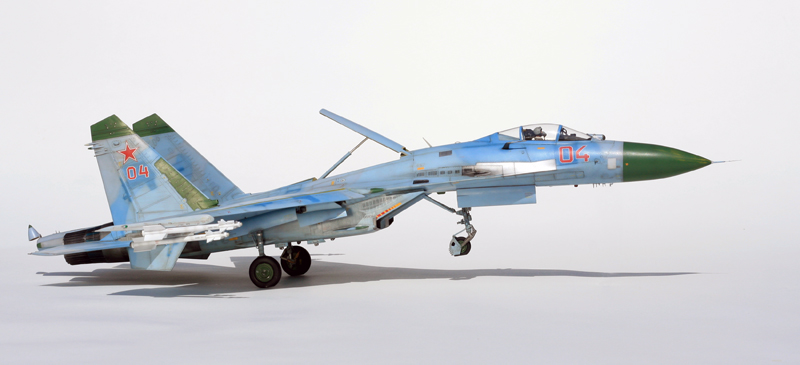
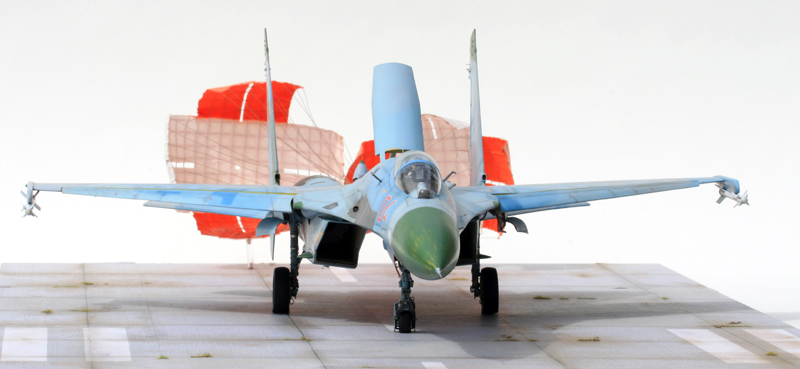
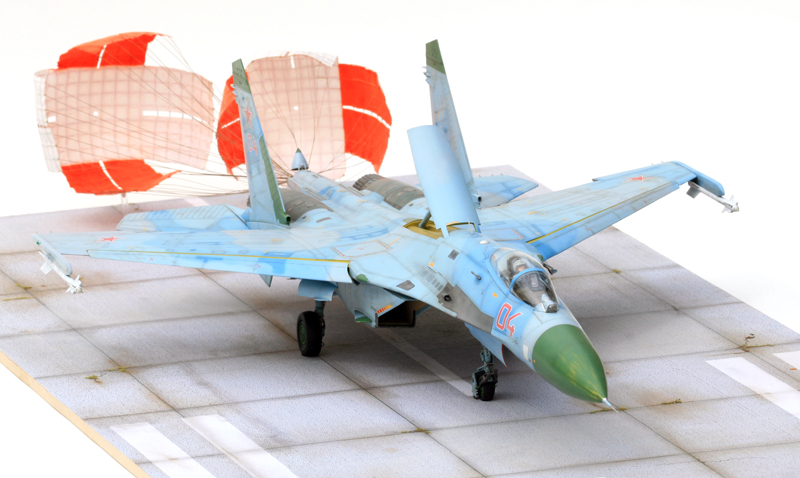
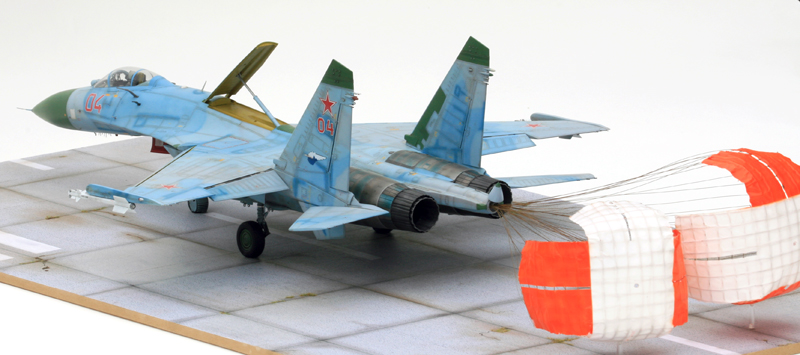
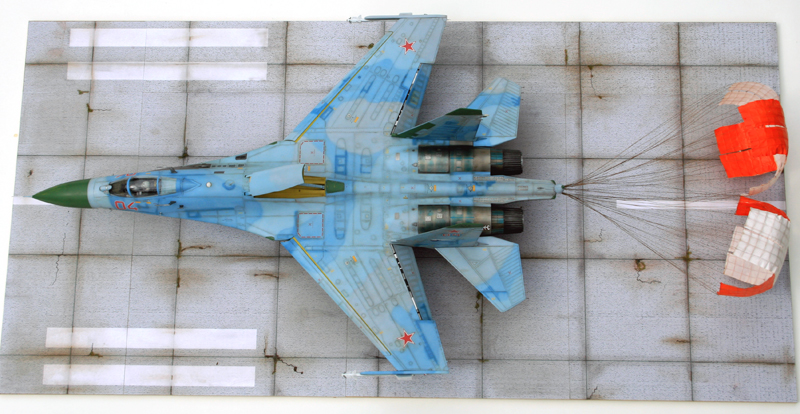
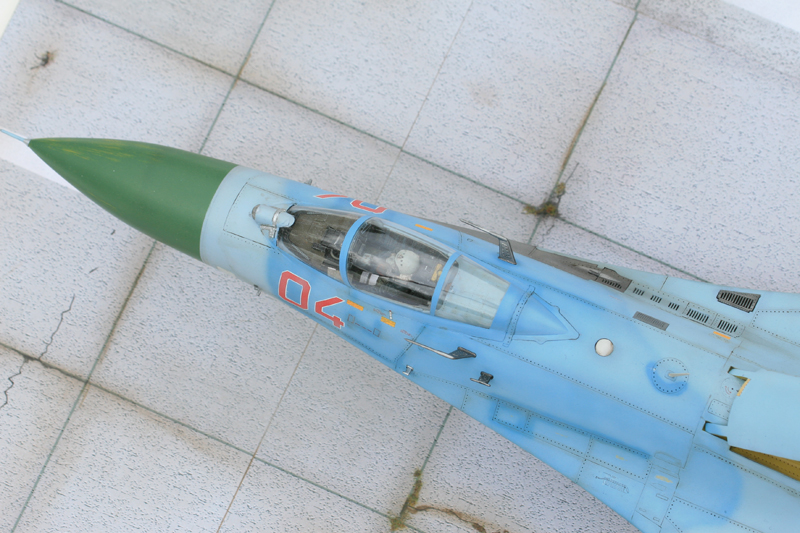
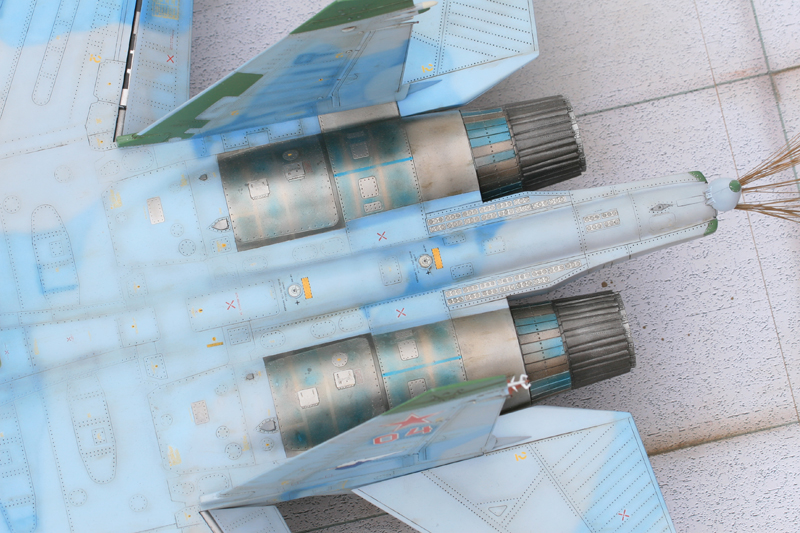
What color have you used inside the gear bays?
ReplyDeletecongratulations, great model!
ReplyDelete